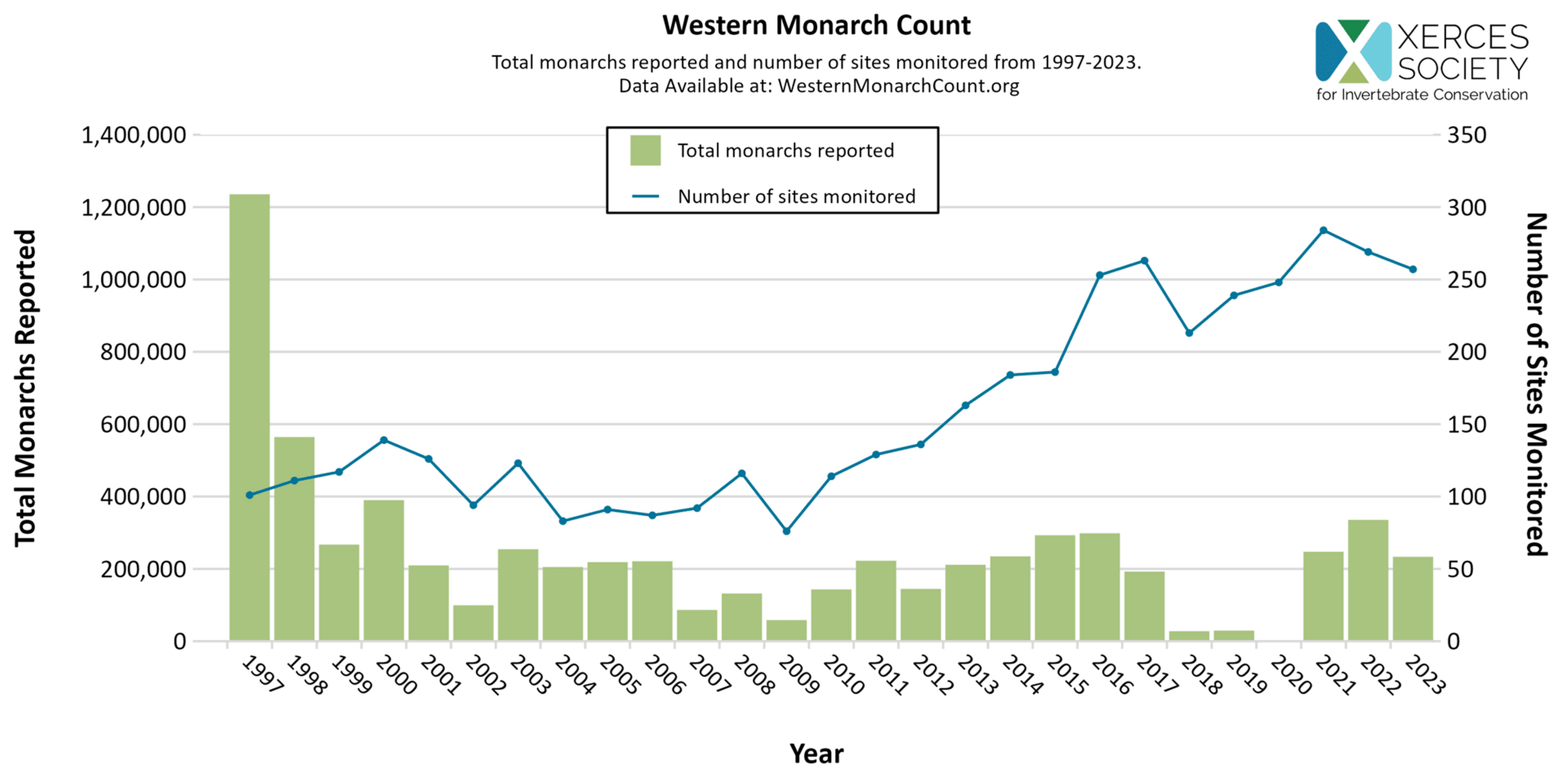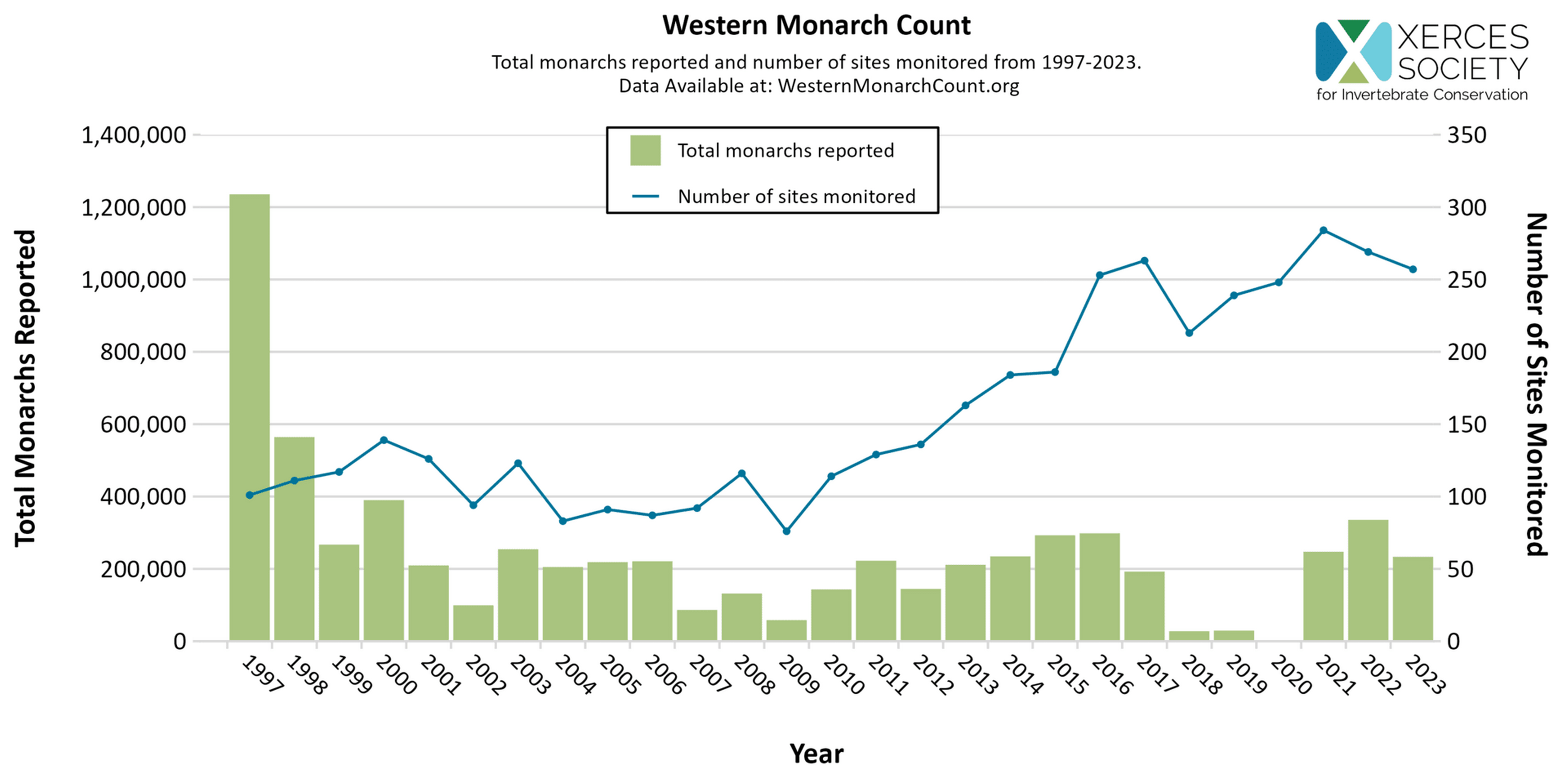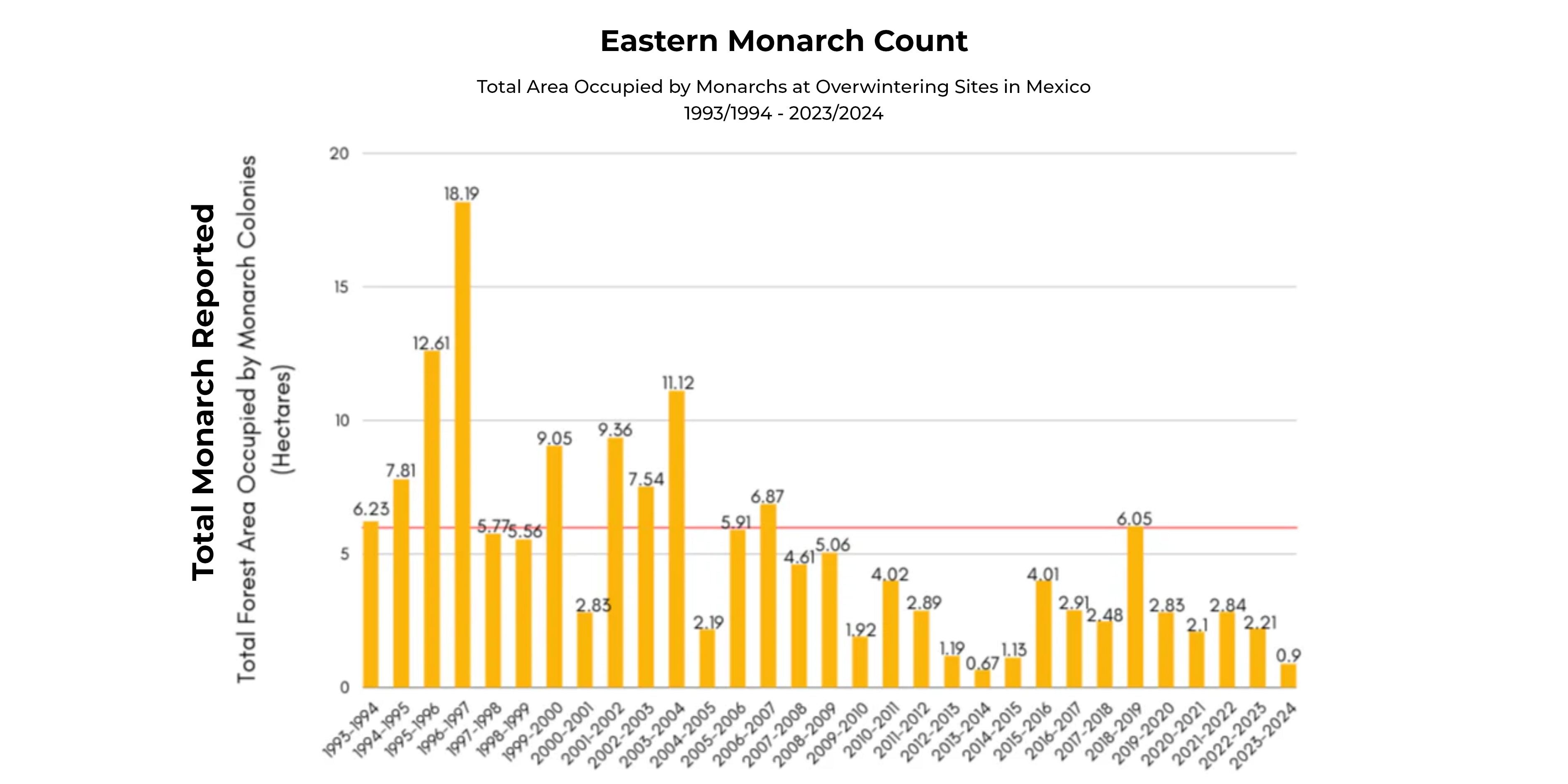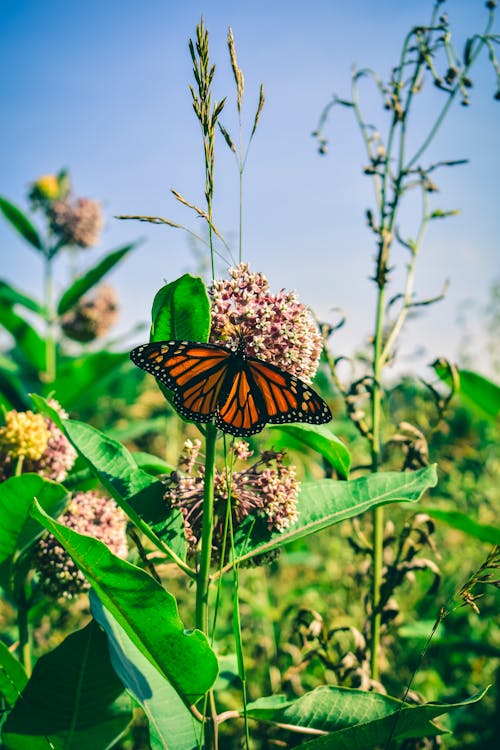
A Journey at Risk
The Monarch butterfly—a vibrant symbol of beauty and resilience—is a global icon and a marvel of nature. These brilliant creatures, each weighing less than a dime, travel an astonishing 3,000 miles each year. This remarkable journey, crossing three countries, takes multiple monarch generations to complete. But today, their journey and existence are under threat.
Decline by the Numbers: How Bad is It?
In 2023, Eastern Monarchs saw a 59% decline in the forest of Mexico and Western Monarchs saw a population count loss of 102,000. Over all in the past two decades, monarch populations have plummeted by more than 90%. Western monarchs, which migrate to coastal California, have experienced a jaw-dropping 99.5% decline since the 1990s. Where there were once 1.2 million monarchs in the West in 1997, fewer than 30,000 remained by 2019. Eastern monarchs, clustering in Mexico, saw numbers fall from 384 million in 1996 to fewer than 60 million in 2019. In 2013, this population reached a low of just 14 million.
Why Are Monarchs Disappearing?
The challenges monarchs face are staggering. Climate change, exposure to insecticides, and habitat loss due to urban development, farming, and drought all contribute to their decline. Milkweed, the monarch caterpillar’s only food source and the sole plant where adult monarchs lay their eggs, has also dwindled drastically across North America. Without milkweed, monarchs simply can’t survive.
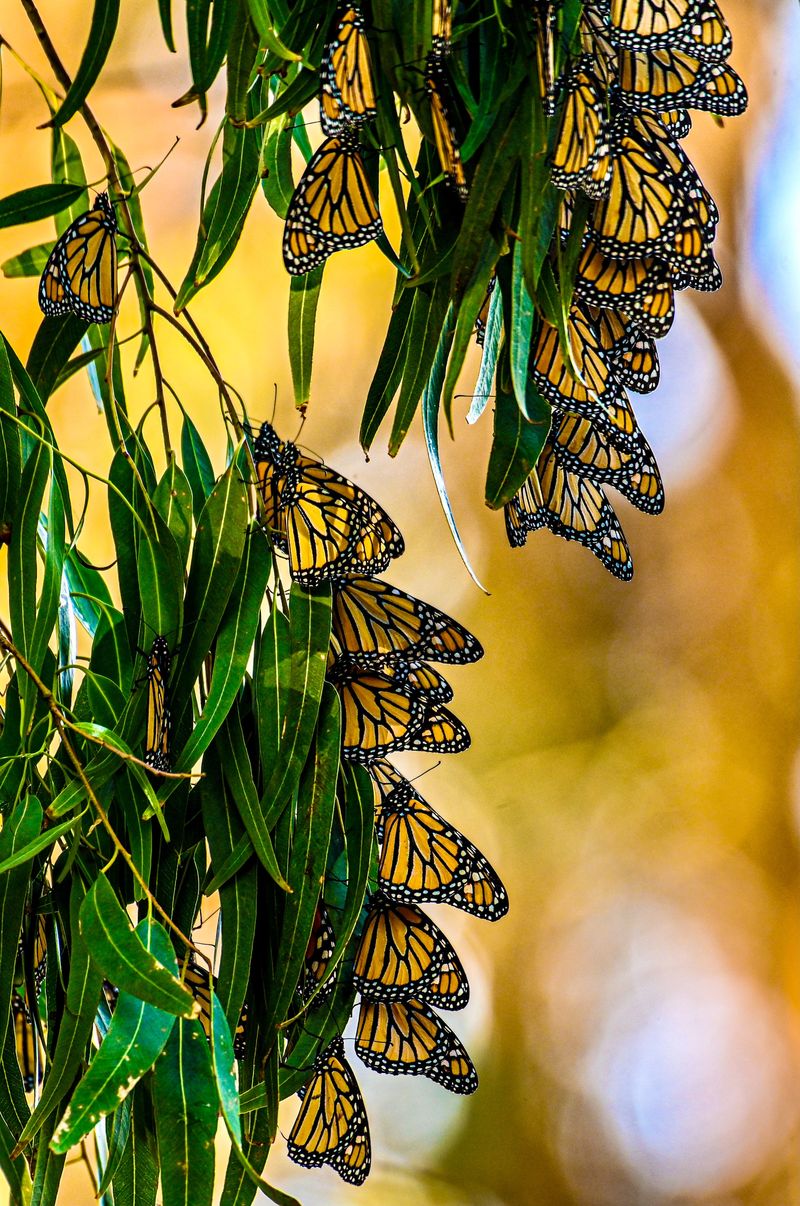
Endangered Status: A Glimmer of Hope?
In the closing days of 2020, the U.S. Fish and Wildlife Services announced that listing the Monarch as endangered or threatened under the Endangered Species Act was warranted, but it was never declared. A formal listing will be announced in December 2024. Regardless - either announcement underscores the urgency of action. The Monarch Conservation Database, created by a team of biologists, now tracks and supports conservation efforts across North America, signaling hope for a coordinated response.
What Can We Do to Help Monarchs?
Every action counts, no matter how small. Monarchs need our help, and we can all contribute:
- Plant Native Milkweed and Nector-rich Flowers: Even a small garden can provide essential habitat.
- Go Pesticide-Free: Choosing eco-friendly practices reduces harm to monarchs and all pollinators.
- Support Conservation Efforts: Donations, volunteering, or simply spreading awareness can amplify the impact.
The Power of Collective Action
From neighborhood gardens to landscape-scale projects, monarchs benefit from every conservation measure. Time is running out, but with collective effort, we can help monarchs flourish once more. Join us—be part of the solution to save these majestic creatures and keep their extraordinary journey alive.
